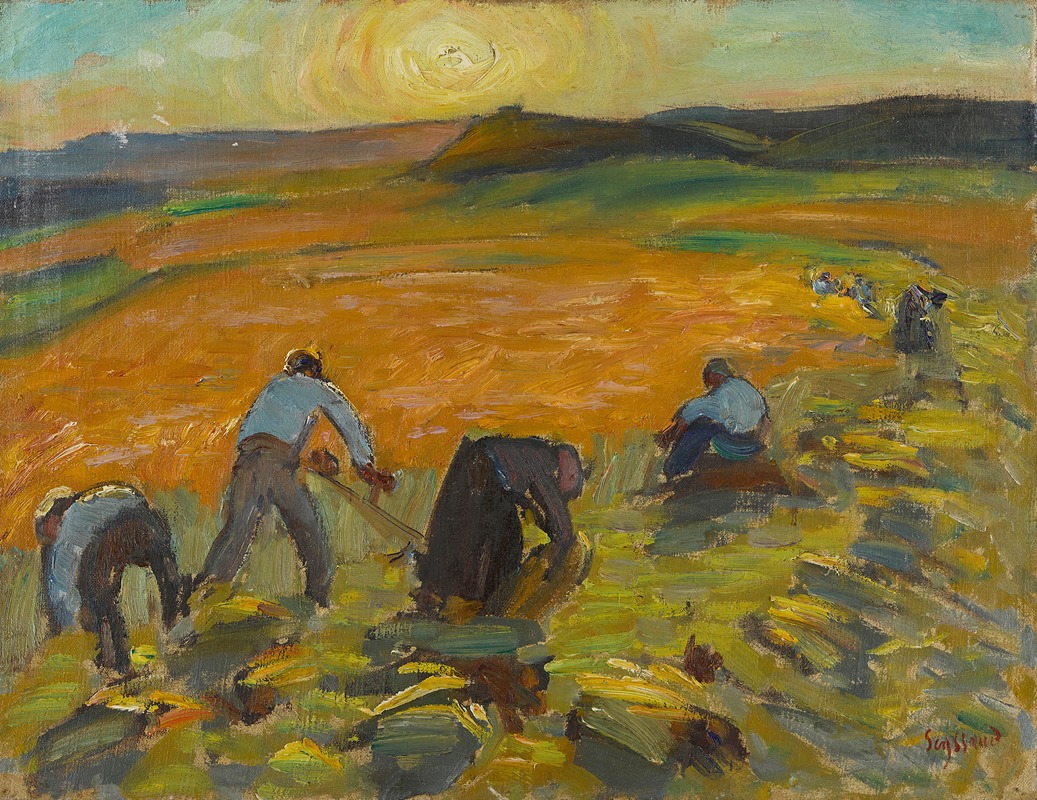
René Seyssaud was a Provençal painter and is known as a precursor of Fauvism.
Seyssaud was born on 16 June 1867 in Marseille, but spent his childhood at his ancestral home of Pezet house (Villes-sur-Auzon). He came from a Vaucluse family, his father (Siffrein Seyssaud) being a lawyer. As he showed aptitude for painting from a young age, he was first enrolled at the École des beaux-arts de Marseille (1879–1883) and after the death of his father in 1885, he joined the École des beaux-arts d'Avignon, where his master was Pierre Grivolas.
Noted for his powerful temperament and his bold, brightly coloured palette, Seyssaud together with Louis Valtat has been described as a precursor of Fauvism. His first major exhibition was at the Salon des Indépendants in Paris in 1892. He then opened the Salon d'Automne and the Salon des Tuileries.
His marriage on 11 January 1899 to Louise Philibert gave him the opportunity to settle in Villes-sur-Auzon, where he chose Mont Ventoux and the gorges of the Nesque as his pictorial themes.
Suffering from tuberculosis, his doctors advised Seyssaud to move closer to the sea and in 1904 he moved to Saint-Chamas, where his studio overlooked the Étang de Berre. He lived there until his death. Still, Seyssaud often came back to the foot of the Ventoux and in the mid-1930s, he set up a studio in Aurel. His cousins Jean, the twins Paul and Philippe, came there to meet him and, following his example, took up painting and made a name for themselves.
Seyssaud died in Saint-Chamas on 26 September 1952. His features are preserved in the portrait painted by Pierre Ambrogiani and kept by the Musée municipal Paul Lafran in Saint-Chamas.
